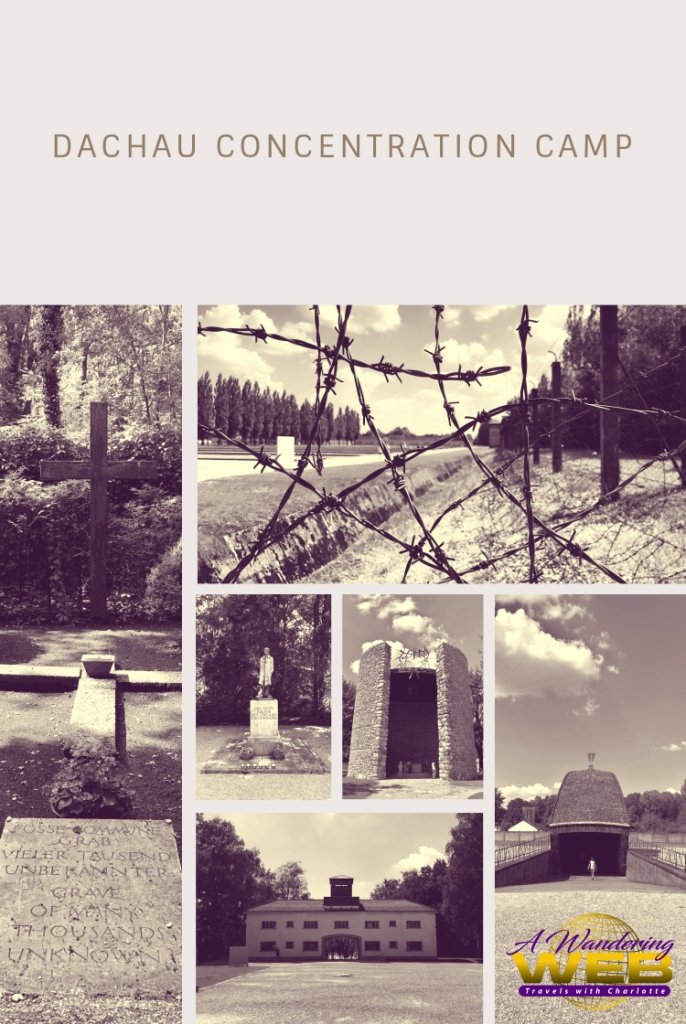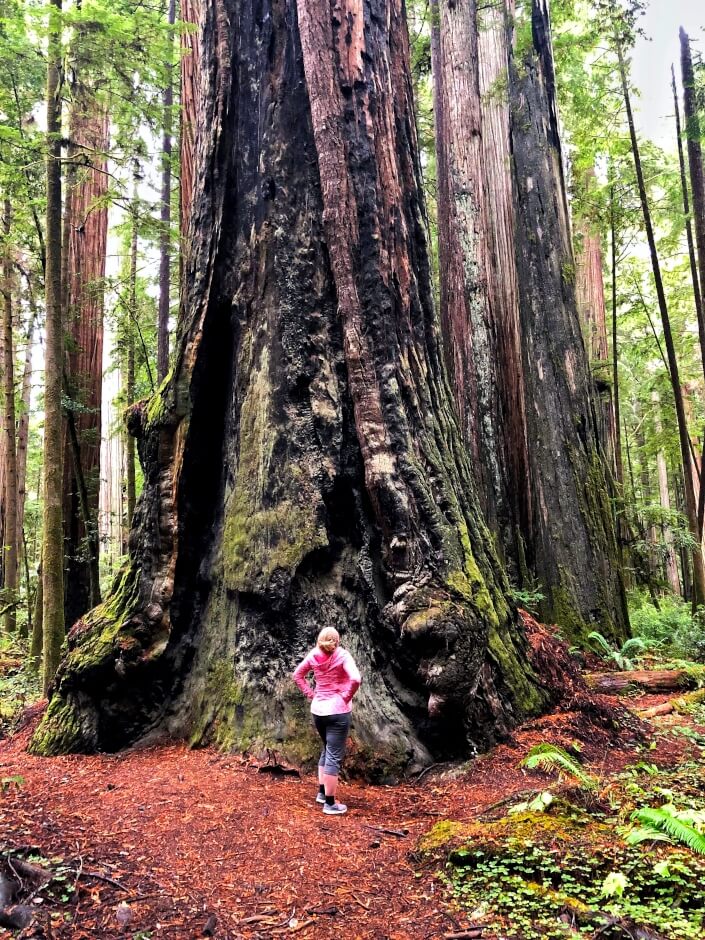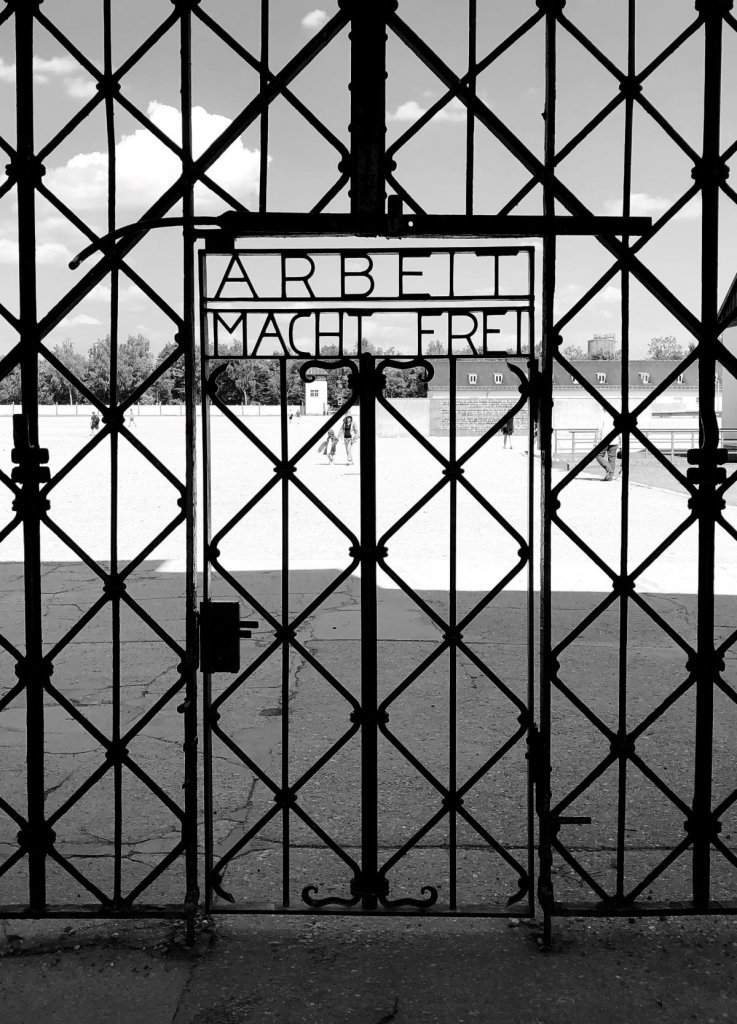
“Arbeit Macht Frei”. A lie etched in the metal gates of Dachau Concentration Camp. Once you saw those words and the inside of those black, cold metal gates, you knew freedom was gone. “Work Will Set You Free”. Only one of the many deceits bestowed upon the people of Nazi Germany.
Visiting Dachau Concentration Camp was the most sobering experience on our trip to Europe. Dachau was our first stop in Germany after leaving Austria. We opted to take the English guided tour of the camp in order to get a full understanding of the dark past hovering over the small town of Dachau.
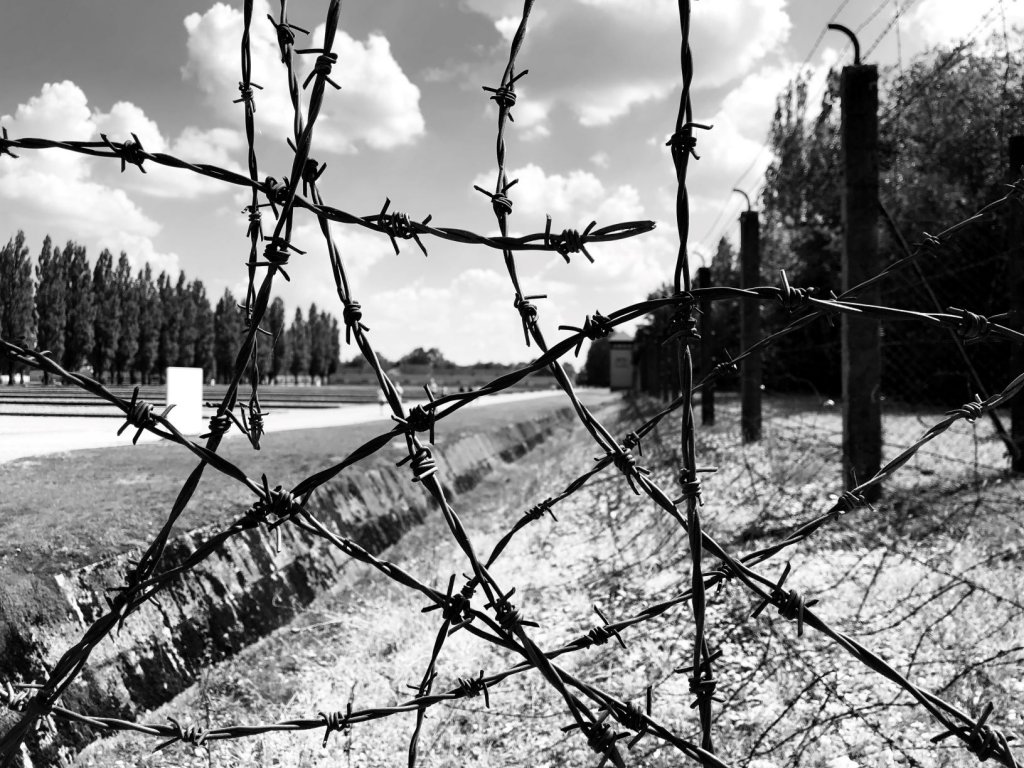
Table of Contents
Our Tour
It was hot on the day of our visit. Our tour began at 2:00 pm and was scheduled to last an hour. It was a fair-sized group. We all waited patiently in the lobby of the canteen for our guide to arrive. Well, some of us were more patient than others. There was a teenage boy complaining to his father about going on an hour-long tour. His whining was irritating. Do you think the people brought to this camp 85 years ago wanted to be held captive here? Have some respect.
Small Town Travel Tip: Be respectful when you visit places with such a dark, historical significance. Above all, no selfies with smiles in front of monuments or in the prisons. Be aware of the suffering of humanity on the ground where you now stand.
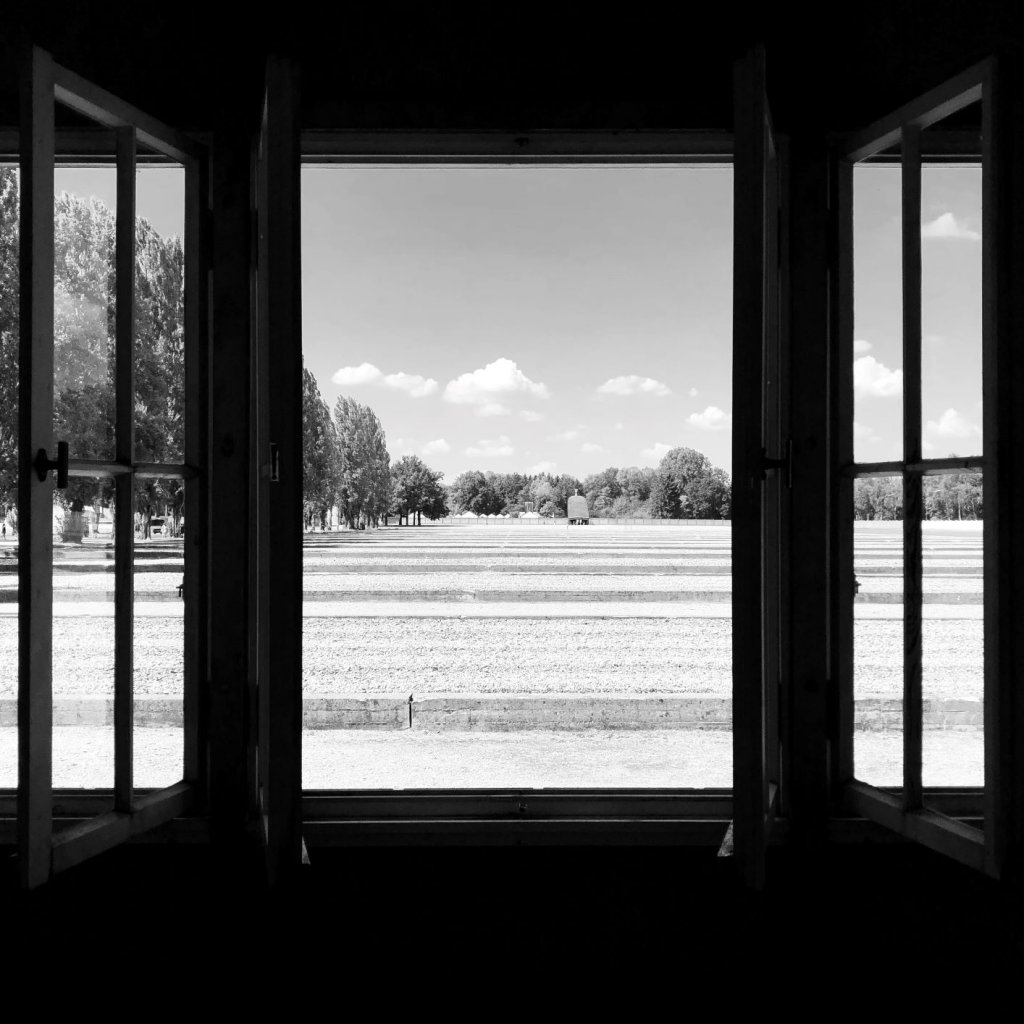
History of Dachau Concentration Camp
Dachau was the first concentration camp built by the Nazis during their occupation. It was opened on March 22, 1933 for political prisoners, those Hitler deemed to be a threat to his dictatorship. The camp would become the training grounds for the SS, Hitler’s private thugs posing as police. The first person to make the list was a Jewish lawyer who had once questioned Hitler on the stand and caused Hitler to stutter. This humiliated Hitler and stirred up hatred beyond comprehension for the lawyer. Cross Hitler, and your name would be added to the infamous list.
Dachau was a camp strictly for male prisoners. In 1935, Nuremberg Laws were passed allowing racial discrimination. New prisoner groups would now be sent to Dachau. Anyone who did not fit into Hitler’s master plan would be imprisoned including immigrants, priests, Jehovah’s Witnesses and homosexuals. The camp was constructed to house 6,000 prisoners. All these people were left to the vices of the SS, who could treat the prisoners in any manner they pleased.
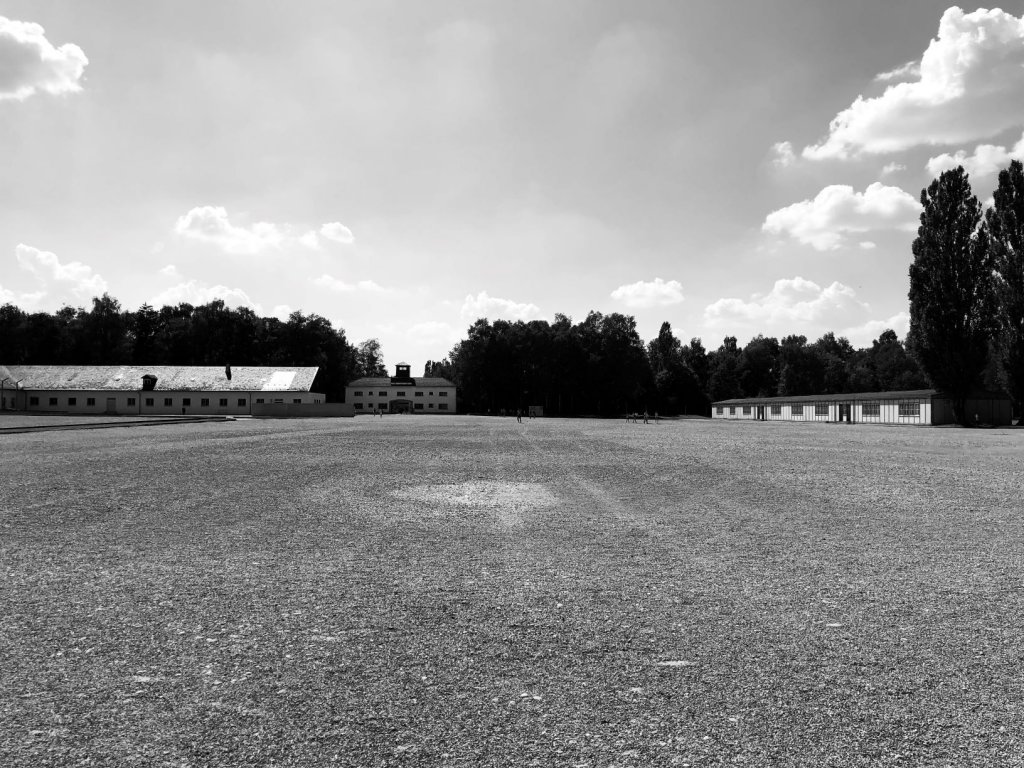
The Schutzstaffel
The SS (The Schutzstaffel) was Hitler’s creation and literally meant “Protection Squadron”. A dictator’s mob squad available to secure and dispose of those Hitler perceived to be his enemies. You had to apply to be a member of the SS and you were also interviewed to make sure you fit the qualifications. Our guide was excellent in explaining all angles of the story. She said it was considered an honour to be a part of the SS. The men were paid well and they were given nice, shiny uniforms. They felt important. The SS did not live inside the concentration camp but adjacent to it in the officer’s barracks. They were fed well and had clean living conditions. It was there they would also be brainwashed into hate. Dachau was to become the model of all concentration camps in Nazi Germany.
There are pictures of the first prisoners who arrived at the camp in the museum at Dachau. Former prison barracks display a vast number of pictures of prisoners, tortures and survivors of the camp. Many of the pictures were disturbing. There was a picture of the first prisoners as they entered the camp. They looked defeated, save one man who stood up tall in his prison uniform in direct defiance of the SS who led him into Dachau. He did not survive.
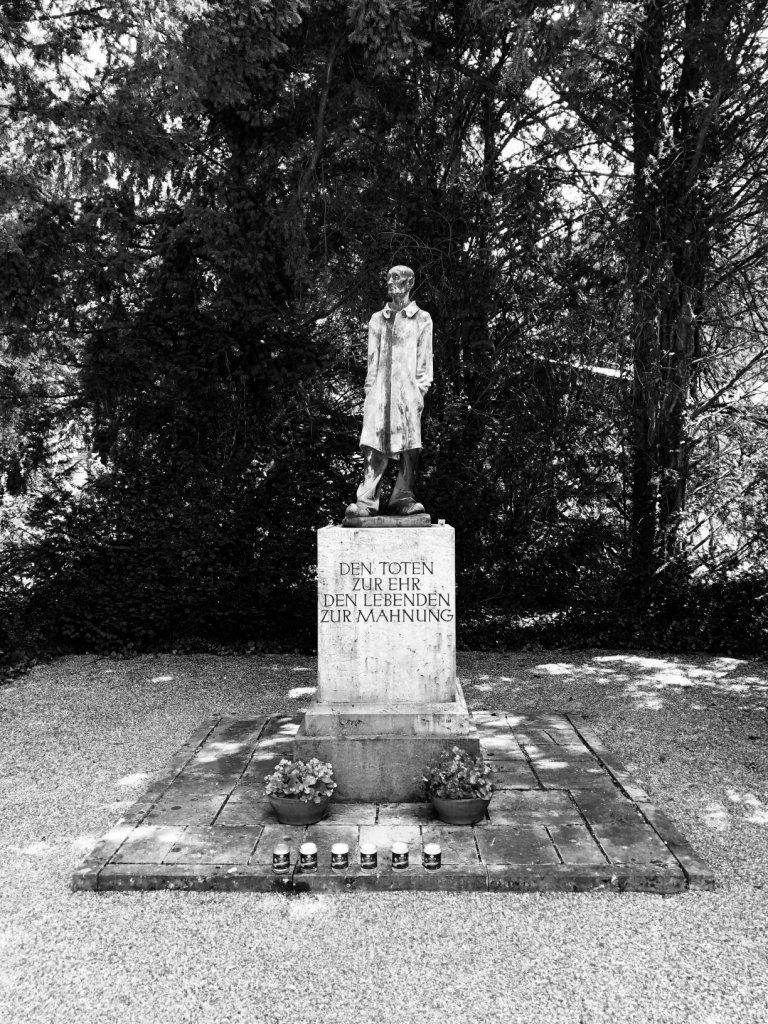
Treatment of the Prisoners
The soldiers did not need any reason to choose someone to be the object of their misdeeds. If you didn’t make your bed right, they could torture you. If you did make your bed right, they would mess it up and then torture you. The preferred method of torment was to tie a man’s hands behind his back and then hoist him up and hang him from the ceiling by his wrists. This could go on for hours. If the prisoner passed out, he would be revived. Other experiments would be to inject air into men’s veins to see how they would react to an embolism. There are pictures of these experiments in the museum. Those images will burn into your brain.
The Priests
The priests in the camps were particularly hated by the Nazis. However, there was one man respected above all others by both the prisoners and the guards. Our guide went on to tell us about this brave man who was given the task of leading a team of priests to build a new structure at Dachau. This structure of brick was not inside the camp fences. It was hidden behind in the trees, out of sight.
Word of gas chambers had reached the prisoners of the camp. Gas chambers were not in the initial plans of Dachau but the Nazis had to come up with a more efficient way for their killing machine. Once the priests realized they were being forced to build a gas chamber, they slowed their efforts, taking an exceedingly long time to complete this building. When the leader of the SS confronted the team lead of the gas chambers as to why it was taking so long, the man responded, “What did you expect? You gave me priests to build it!” What a story of boldness! The gas chamber at Dachau was never used.
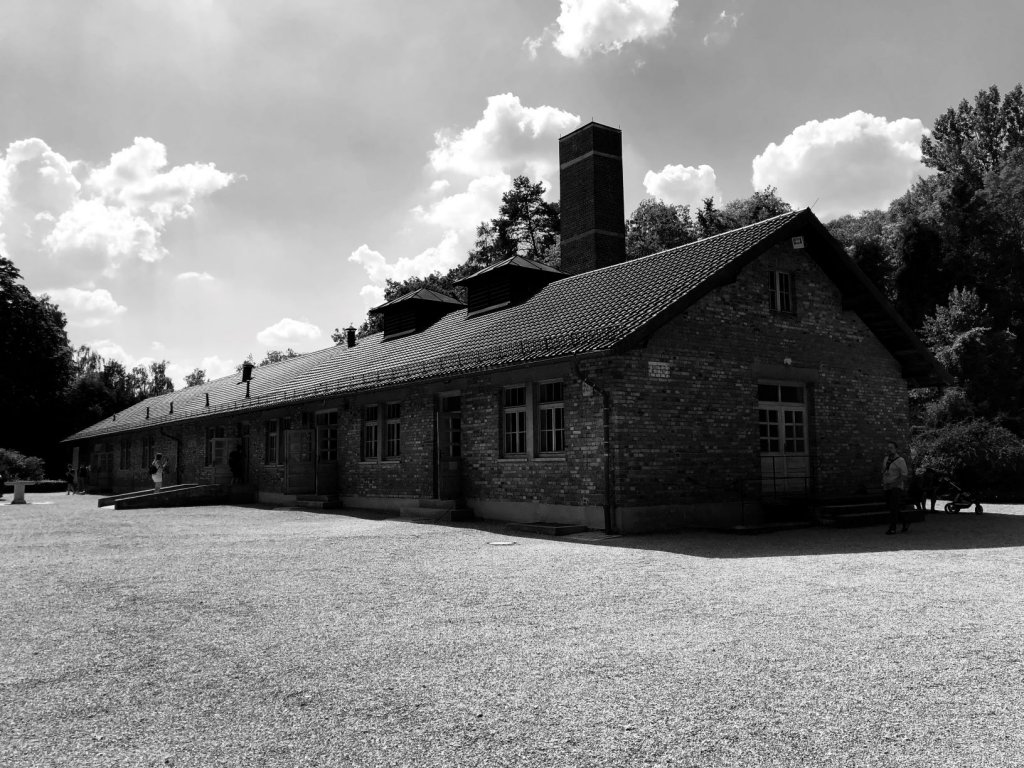
The People of the Town of Dachau
“Did the people of Dachau know what was going on?” Someone had asked our guide during the tour.
“Yes. There was no way they couldn’t know what was going on inside the camp. But we cannot be quick to judge. We have no idea what it was like living under a dictatorship. They knew if they spoke up, they would be behind these walls. They were told, and believed, the people behind these walls were criminals. Some felt they deserved to be here because of their so-called crimes. It is not an excuse for their actions. It means we don’t understand.” After the Allies liberated the camp, they forced the people of Dachau to walk through the facilities to see what was going on in their backyards. Dachau residents were forced to clean up the horror to which they had turned a blind and fearful eye.
Monuments Inside Dachau Concentration Camp
There are many monuments inside Dachau. Three at the back end of the camp stood out; the Mortal Agony of Christ Chapel, the Protestant Church of Reconciliation and the Jewish Memorial.
The Jewish Memorial
An eerie feeling of walking into an oven overcomes as you descend the ramp, darkening as you enter. At the lowest point, the light pierces the darkness where a menorah with seven branches reaches out the top into the sunlight. Chiselled over the entrance to the Memorial is the Psalm: “Put them in fear, O Lord: that the nations may know themselves to be but men. Selah.” (9, 21)


The Protestant Church of Reconciliation
The Protestant Church of Reconciliation is an active Lutheran church today. Set into the ground and void of square angles, the architecture is irregular in direct opposition of the square angles of the camp. Emphasis is placed on the meeting of darkness and light. At the point where darkness and light meet, there is an inscription over a steel gate from the 17th psalm: “Hide me under the shadow of thy wings.” The inside of the church is grey concrete. There are no colours inside. Only a single red rose stands on the round altar, encircled by small candles.
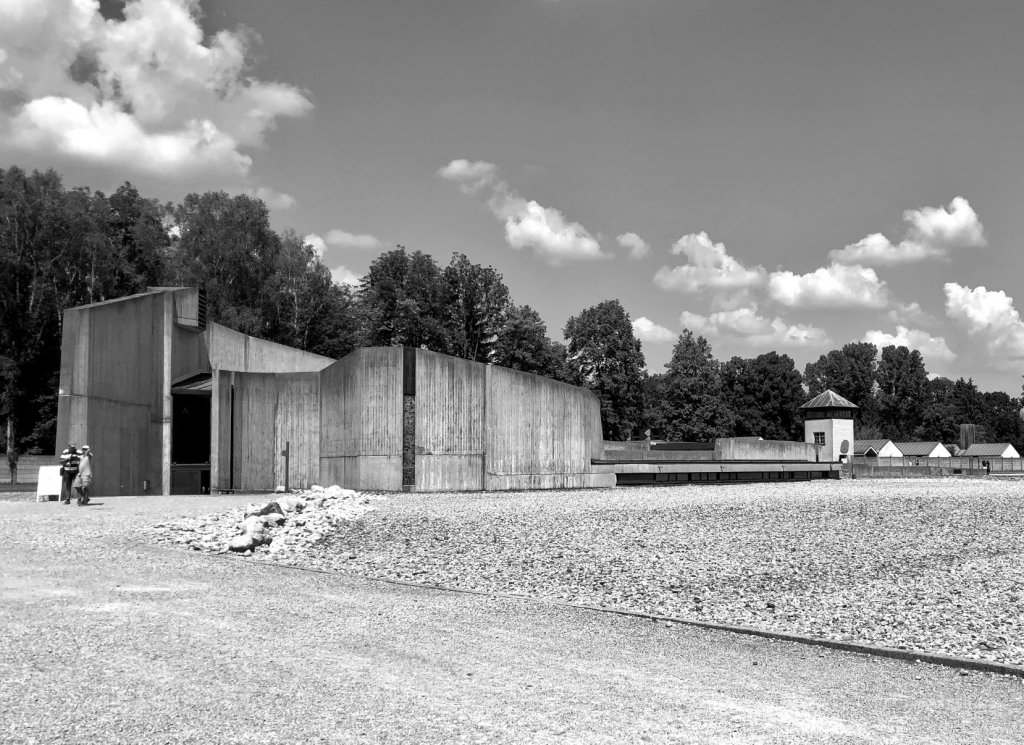
Mortal Agony of Christ Chapel
The Catholic memorial at Dachau is a circular stone building that faces the central road of the camp. The chapel is dedicated to Polish priests and prisoners who suffered at Dachau.
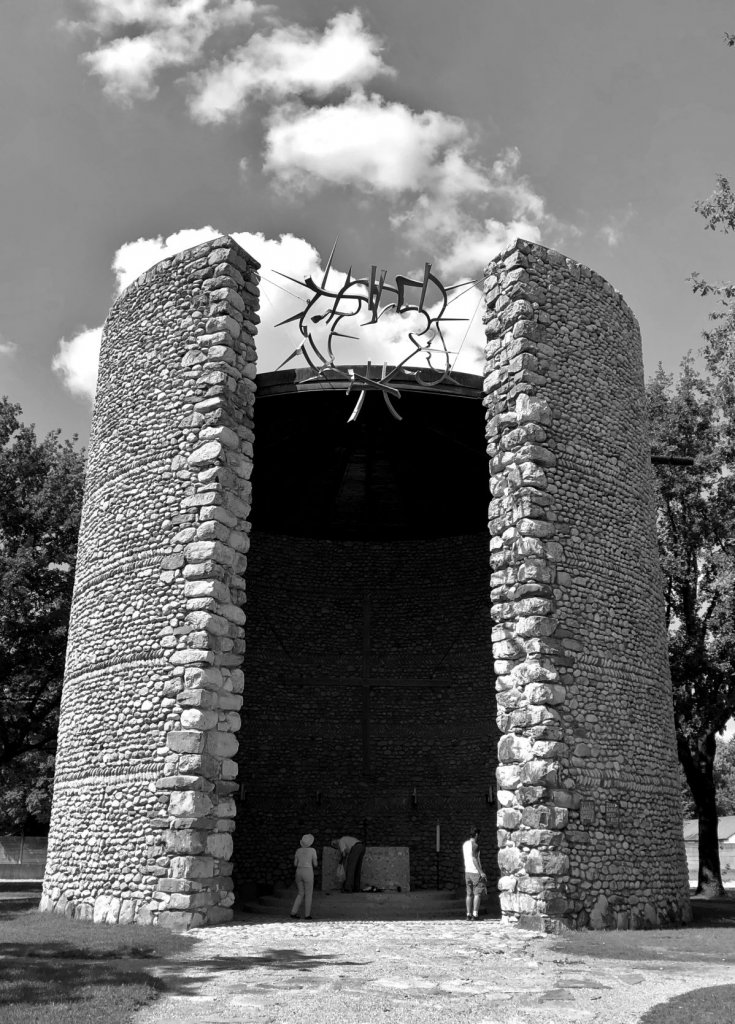
The most poignant memorial was an abstract of metal. A statue of people molded together to look like a barbed-wire fence sits in front of the prison buildings. The significance of the people on the fence is in remembrance of those who chose death by grabbing the electric fences surrounding the camp rather than to suffer further agonies.
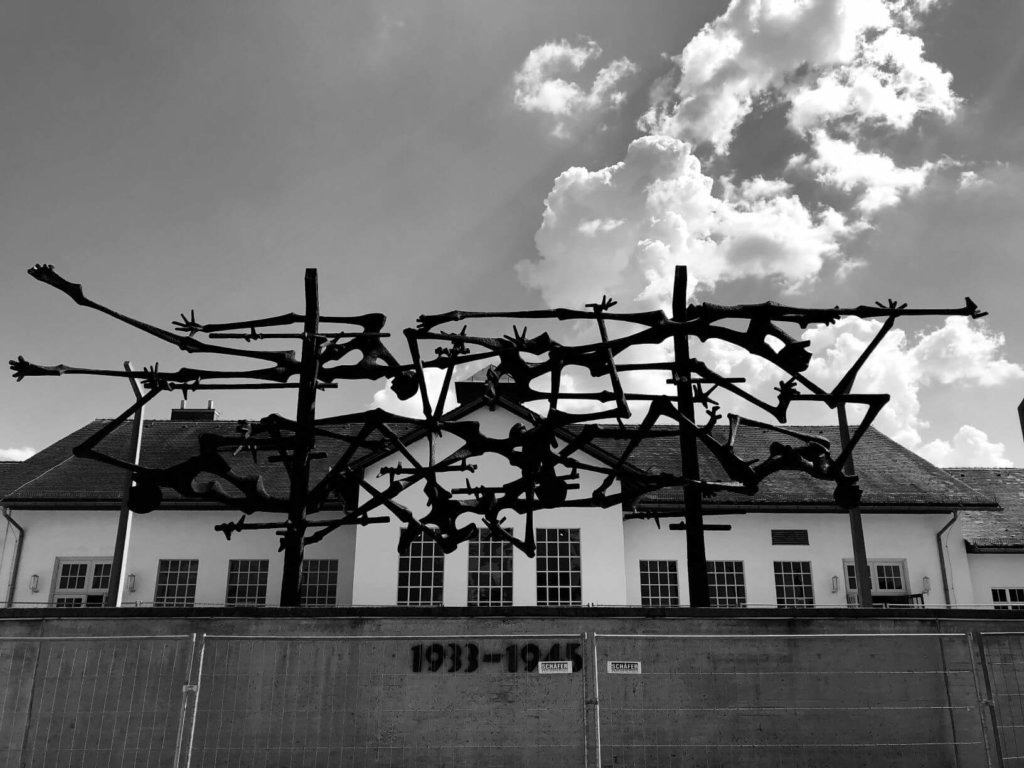
The Grounds of the Camp
Only the foundations remain of the original barracks. A row of trees stretches along the main road in the camp square. Trees planted by the prisoners, by force, to be a façade of well-being on the grounds. Now, the trees are full-grown and stand as a testament in all their greenery to the lives lost and saved.

“I will end the tour here.” Said our guide as we arrived at the gas chamber and crematorium. “Most people don’t want to go inside so I will leave you to explore the area as you are comfortable.” The guide and some people left. Others stayed.
The Crematorium and Gas Chamber
It is surreal to stand at the doors leading into the rectangular building built for such horrors. Darryl and I entered the rooms where people disrobed and prepared for their showers. Clothing was disinfected and fumigated in this area.
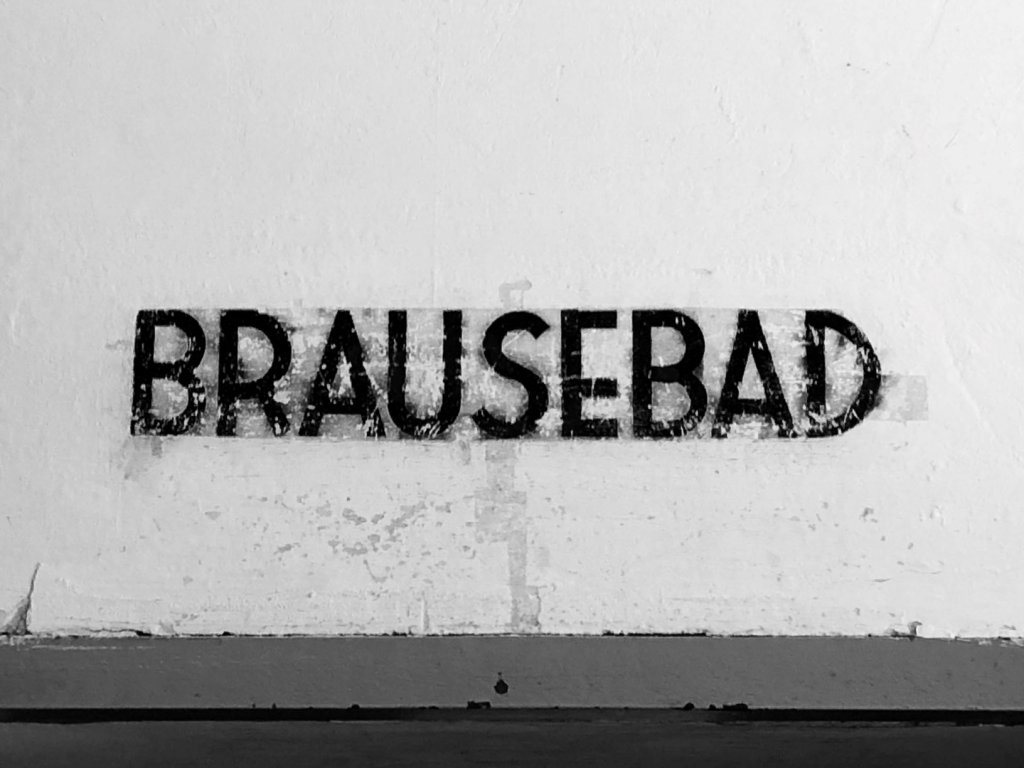
The word above the showers evoked fear into people. To this day, it still conjures up a feeling of despair and dread. The gas chamber. Square. Cold. Dark. Horrifying. Just like the rest of the camp. Everything built in square angles to force a sense of monotony.
Death Rooms
There were two death rooms in the building, one on each side of the crematorium. Death rooms were used to store corpses for disposal. Also, the SS would not stoop so low as to do the dirty work. Prisoners were forced to carry the dead to be incinerated and stack them like logs in the death rooms. The prisoners were also the ones to place the bodies in the ovens for incineration. It was a form of mental torture to make the men dispose of the bodies. Their comrades. Their friends.
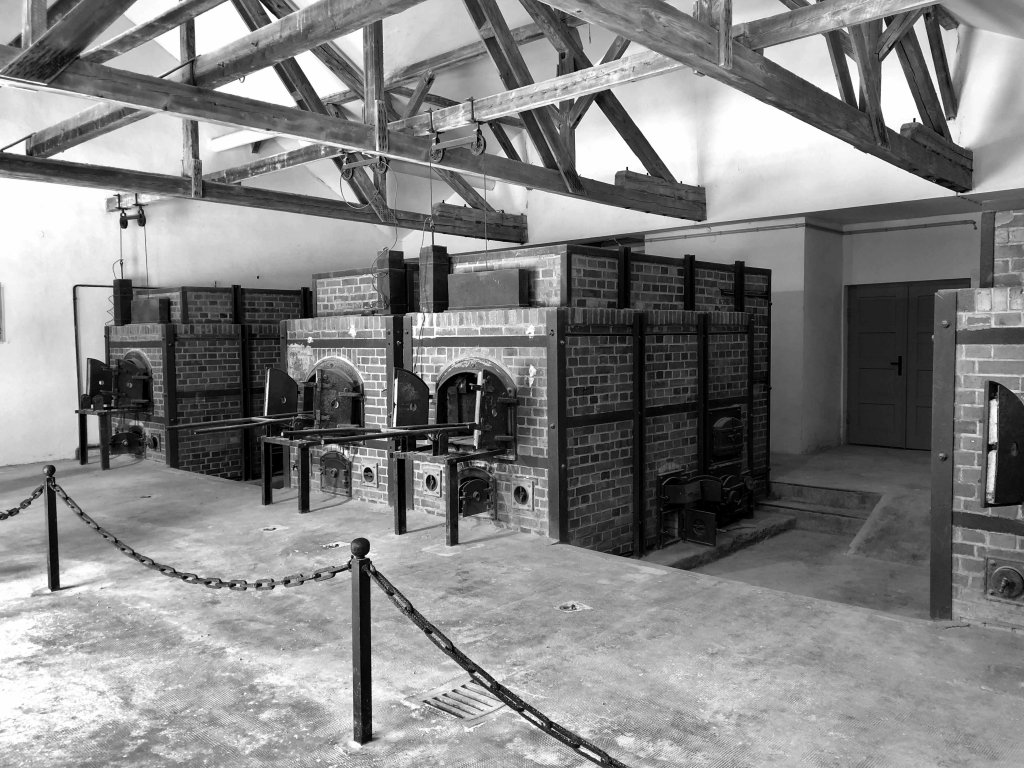
Death room 2. I entered this room next to the crematorium in silence. Everyone in the building was still. It was too much to comprehend the suffering. How could people do this to their fellow human beings? How could hate grow to such extreme levels? As I stood there, looking around the empty, square room, the church bells rang to signal the top of the hour. I cried.
I needed a few minutes to compose myself on a bench outside.
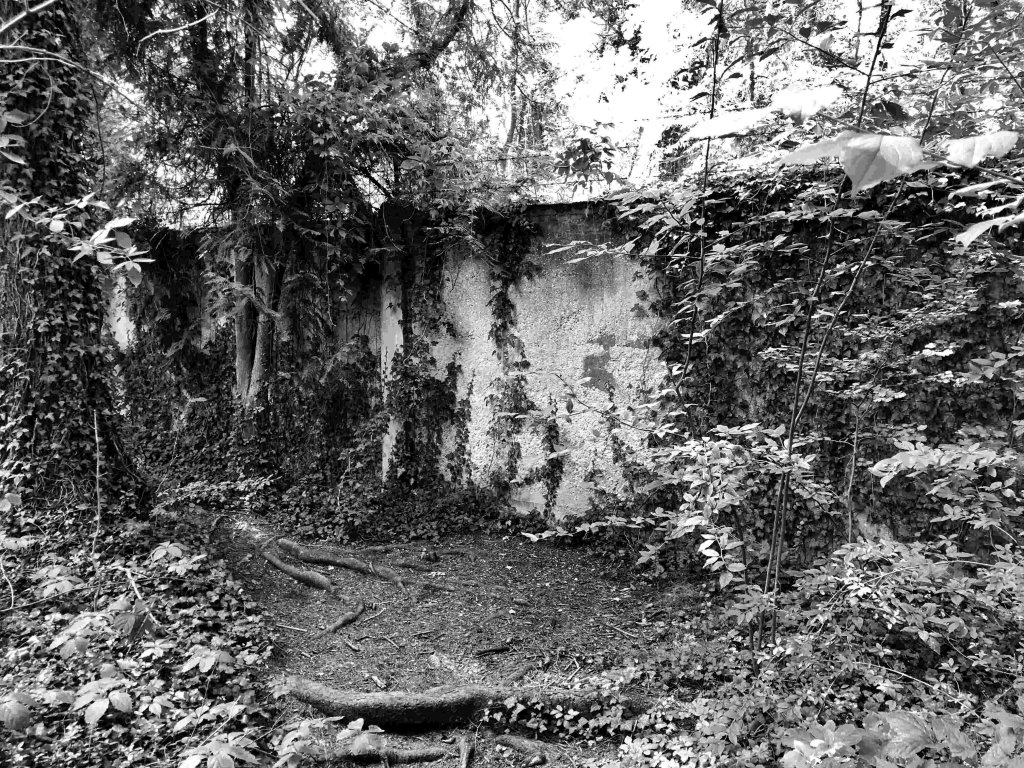
Liberation of Dachau Concentration Camp
Once the Allies had a stronghold on Nazi Germany, Hitler’s plan was to blow up all the concentration camps with all the prisoners still inside the walls to hide the evidence. At the height of Nazi rule, there were over 30,000 concentration camps throughout the countries suffering Germany’s occupation. Slowly, the Allies liberated all the camps, some prisoners rushing out excited and dying at the same time from malnutrition. US Army troops liberated 32,000 prisoners from Dachau on April 29, 1945.
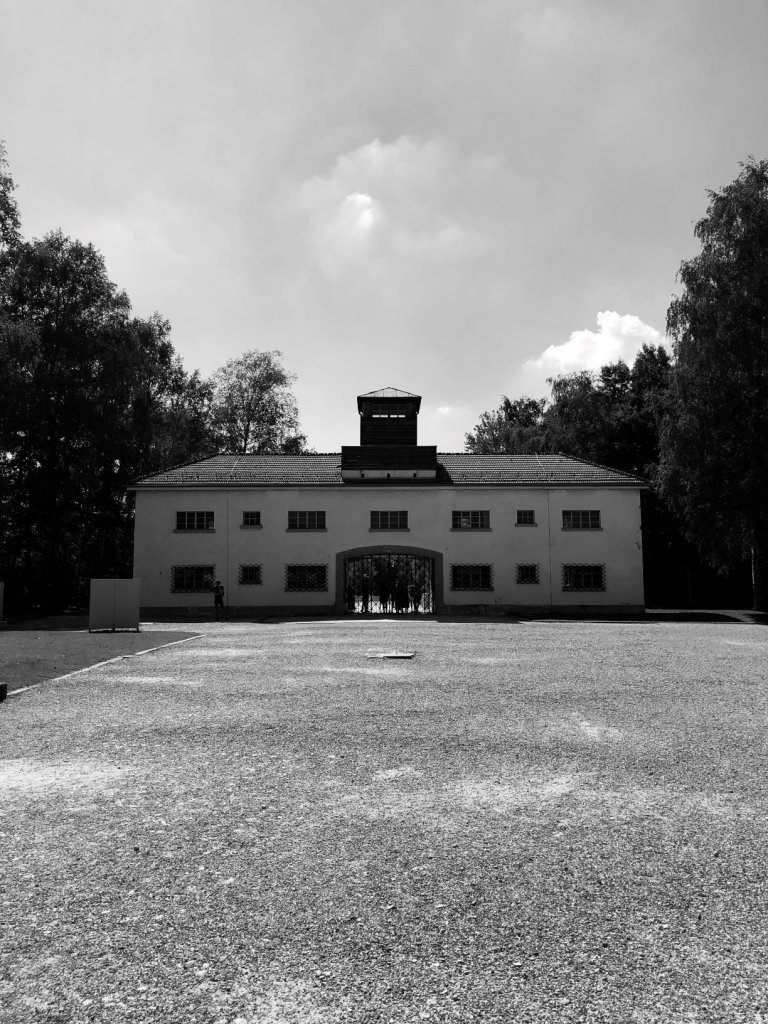
Our guide said school groups come to Dachau on field trips. The Germans feel it is important for the young generation to know what their ancestors did. Important so the tragedy never happens again.
A visit to Dachau Concentration Camp is not for the faint of heart, nor is it a place to take small children. It is a mass graveyard deserving respect. The surviving relatives have requested it be a memorial for the perished thousands. Thousands with no known grave, only graves of ashes.

*Note: Some of these links are affiliate links, meaning that if you book through my link, I will make a small commission (at no extra cost to you).
All pictures in this post are taken by Charlotte, yours truly, as always, unless otherwise stated.
Pick up my Published Travel Memoir for Inspiration
Roam Free is a deeply personal and often hilarious travel memoir that pulls you in to the wild and woolly ride of my epic travel adventures. If you loved Peter Mayle’s A Year in Provence, you’ll delight in Roam Free’s sweetly innocent deep dive into a life of untethered long-term travel. Get your copy on Amazon and become inspired today.
“I just finished your book and I wrote a great review on Amazon. Congratulations on your book, your blogging career, and mostly on your courage to step out of the box then burn the damn box!! Your book is inspiring. Bravo.” – Irene Cabay
Book Your Flight and Car Rental
Find cheap transportation by using Kiwi.com. This search engine combs websites and airlines around the globe to become the ultimate travel hack.
Book Your Accommodation
You can book hotels, apartments, resorts, villas, B&Bs and guest houses at Booking.com! They consistently return the most economical rates for guesthouses and cheap hotels.
Like surprises? Try Hotwire.com and Save up to 60% off 4+ Star Hot Rate Hotels!
Always been curious about Airbnb but afraid to try? Now you can check them out and earn up to $62 CAD off your first trip!
Check out our world recommendations page on Where to Stay!
Book Your Small-Group Tour, Activities and Attractions
For the best small-group tours check out G Adventures’ Insanely affordable tours!
Viator is another great option so don’t miss out! Guaranteed lowest prices on tours and activities.
Don’t Forget Travel Insurance
Travel insurance will protect you against illness, injury, theft, and cancellations. It’s comprehensive protection in case anything goes wrong. We like World Nomads because they have great rates and cover a range of adventurous activities.
P.S. – If you’ve found our website helpful, please consider booking your next trip through the links on our Resources Page. We have personally used the companies listed there in our own travels. By booking through these links, the small commission we earn helps us keep the content up to date, expand our resources, and keep the website community supported.
